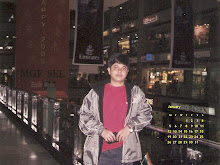
Bhakti (devotion) and Pujä are interwoven with the daily life of a Jain and is considered as part of daily conduct (Vyävhar). Bhakti and Pujä shows the purest of soul in the form of daily conduct. This daily conduct should lead us to the path of (Nischäy), the realization of absolute purest form of our own-self, the soul. There are nine types of Bhakti: (1) Hearing God's name (Shravan), (2) Devotional singing (Kirtan), (3) Remembering (Smaran), (4) Worshiping ( Jinpujä ), (5) Bowing down (Vandanä), (6) Adorning (Archanä), (7) To seek refuge in complete surrender - Servitude (Sharan), (8) Friendly sentiment (Maitri) and (9) Dedication of self (Nivedan). The Jinpujä process developed by our great Ächäryas include all nine types of Bhakti.
There are various types of Pujäs: some of the common Pujäs are (1) Eight-fold Jinpujä (Ashthaprakäri or Ashthadravya Pujä), (2) Athär (18) Abhishek Pujä, (3) Panch Parmeshti Pujä (4) Snätra Pujä. There are five types of Pujäs to twenty one types of Pujäs.
To be engrossed completely in Jinpujä, the aspirant should have Tadgat Chitt (full concentrration), Samay Vidhän (observance of the proper timing), Bhäv Vruddhi (ever-increasing devotion), Vismay (admiration - astonishment), Pulak (delight) and Pramod-pradhän (appreciation of great qualities of the Tirthankar).
By performing Jinpujä on a regular basis with pure feelings (bhäv - mental / psychic aspect), it can remove eight types of karma: knowledge-obscuring karma, perception / awareness obscuring karma, belief and conduct diluting karma, energy obscuring karma, life-span determining karma, body-determining karma, status determining karma, and pain-pleasure producing karma. Thus, liberate our selves from the bondage of karma forever.
Purity to be Observed for performing Pujä:
The purity of the surroundings inevitably affects one’s purity of thought. Purity of the Jinpujä ceremony is integral to the proper completion of Jinpujä.
· Physical purity: The aspirant should take a bath using the necessary amount of water to clean his/her body. For Digambar Pujä: After wearing Pujä clothes, take Kesar (saffron paste) on your right ring finger and place it on various parts of the body to symbolize that you are clean and ready to start the Pujä. In this order, you anoint the forehead, left and right earlobe, the neck, and near the belly button. Clean your fingers after this and do not use the same Kesar for Pujä.
· Purity of clothes: We should have a special set of clothes worn only for pujä. The clothing should never have been worn while using the rest room and never have been worn while eating or drinking. Traditionally, garments should be generally white and unstitched. Men are recommended to wear dhoti and khesh. In contemporary times, women can wear almost anything as long as the clothes are new. For Digambar Pujä: the clothes must be handwashed clean. One must not have eaten or gone to the bathroom in those clothes
· Purity of mind: While worshipping avoid stray thoughts. We should utter relevant verses and meditate on the virtues of the Bhagwän.
· Purity of Ground: We should sweep the floor of the temple, clean and arrange the articles of worship.
· Purity of Upakaran (items used in worship): We should buy good and clean items for worship.
· Purity of money: Money to be used in religious purposes must be earned honestly. Ill-gotten wealth should not be used.
· Purity of Ceremony: We should stop thinking of worldly affairs as soon as we are on our way to the temple. We should not carry out any worldly business in the temple area and shuld perform the Pujä ceremony systematically.

No comments:
Post a Comment